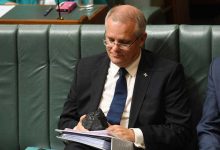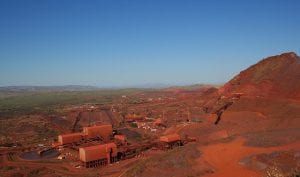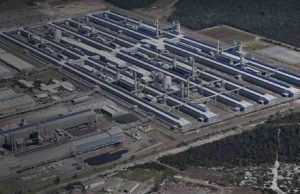Federal Labor is preparing to launch its energy policy – some six months out of a likely election date – with an expected attack on the Coalition government’s efforts to support new investment in coal generation, and details finally of its own plan to achieve its target of 50 per cent renewables by 2030.
The policy will be unveiled by Labor leader Bill Shorten at a presentation in the Sydney offices of Bloomberg New Energy Finance. If Bloomberg NEF’s own position on the future of energy is anything to go by (it thinks that any investment in new coal is environmental and economic madness), then Labor can be expected to go hard on the differences.
Labor, if it wins power as the polls suggest, is expected to recombine the climate and energy ministries, which were pulled apart by Morrison so that his energy minister Angus Taylor could focus on the Coalition’s coal ambitions, and environment minister Melissa Price could get befuddled by emissions targets.
(Labor will stop short of the example of France and Spain as label this combined ministry as “the ministry for ecological transition”. The Murdoch media simply couldn’t handle it.)
And while new polling shows the Greens breathing down Labor’s neck in the Senate, and becoming the gatekeeper on policies, and a host of liberal and climate-focused independents in the House, Labor will also stop short of Spain’s example of a fossil fuel car ban, the phasing out of fossil fuel subsidies, and a commitment to 100 per cent renewables.
Indeed, RenewEconomy understands that Shorten’s policy unveil will focus on energy only, and not the economy-wide emissions reduction target, and its Paris climate treaty down-payment, which under current trajectories Australia could miss by one billion tonnes.
Instead, Labor is expected to reproduce its own version of the National Energy Guarantee. This is the classic wedge policy tool after the Coalition’s decision to drop the policy at the behest of its right wing.
Labor’s point of difference will be a higher emissions reduction target for the energy sector (minus 45 per cent by 2030), and hopefully some tidying up of the various mechanisms to ensure they don’t shut out new competition or lock in the power of the incumbent utilities.
But Labor also understands that the sharp differences in the Coalition parties are not easily resolved – either in government or in opposition. So while the NEG might be in place, it may not be able to provide the sort of investment certainty required to support new projects, given that the Coalition’s right wing has already dismantled an existing carbon price once, and ditched the proposed NEG.
(There is some irony here. Back in 2010, the last time Labor won power, the favoured policy was a carbon price that was desperately opposed by the business lobby. Now the business lobby has turned full circle, and is calling for a carbon price, but neither mainstream party is ready to go there).
So the speculation is that Labor will seek to support its NEG with a series of reverse auctions, as the ACT government, the Victoria government and the Queensland government have done so successfully.
The Coalition – in all its incarnations from Abbott, Turnbull and Morrison, and energy ministers Frydenberg and Taylor – has sought to demonise Labor’s 50 per cent target as irresponsible and an economy wrecker and a recipe for price hikes.
But the reality is, as ITK analyst David Leitch points out in this new analysis, getting to such a target won’t actually need much in new investment. Leitch puts the requirement at little more than 1.1GW a year over the decade from 2020 to 2030, a level he describes as almost trivial.
This is supported by the Australian Energy Market Operator analysis in its 20-year blueprint known as the Integrated System Plan, which takes into account Queensland and Victoria’s state-based renewable energy targets, the anticipated coal retirements in NSW, and concludes the country will likely be at 46 per cent by 2030 in any case.
Those ISP numbers suggest a total of 100TWh from wind, large-scale solar, rooftop solar and hydro by 2029/30, out of a total generation of 212TWh in the National Electricity Market (which excludes W.A. and N.T.). AEMO’s numbers point to 35TWh from wind, nearly 26TWh from large-scale solar, more than 23TWh from rooftop solar, and 15TWh from hydro by 2030.
(This does not include various large-scale storage and distributed storage load and generation).
Will this target be good enough? Labor’s own climate and energy spokesman Mark Butler hints that it won’t be. In a speech on Monday, Butler noted Australia was now pretty much the only major advanced economy where greenhouse gases were rising rather than coming down.
“We are not meetings the targets that I already regard as inadequate. We are certainly not meeting our Paris targets in a “canter”. Our poor performance is really reflected across the economy. Other than a big burst of renewable energy investment to discharge the Renewable Energy Target, every single sector of the economy at the moment sees pollution rising because of a lack of policy.”
And he lamented the state of the debate, where poll questions are consistently put as a choice between emission reductions and price falls.
“At a time where we simply have to renew our ageing electricity infrastructure, much of which was built in the 1960s and 1970s, replacing it with renewable energy is going to be the cheapest way to guarantee energy through the future,” Butler said.
“The idea that there is this false choice and you have to pick, I think reflects the poor, immature nature of the debate here in Australia.”
There are another couple of elements that Labor may unveil on Thursday:
One is a commitment to the ACCC recommendations for new dispatchable generation. This could be a variation of their own reverse auction plans, but without the gerrymander and distortions introduced by Taylor, who has thrown out restrictions on market share, existing generators and emissions in his hasty and desperate attempt to meet the needs of the coal lobby.
Given that electricity prices, and particularly the impact on low-income households, will loom large as an issue (particularly with that 23GWh of rooftop solar predicted by AEMO), it seems likely that Labor may follow the state governments and recommend a battery storage initiative aimed at vulnerable households.
It could be a variation of the one proposed by South Australia’s Labor government, which specifically targeted social housing, or the version introduced by the South Australia Liberal government, which gave some extra incentives to low-income households but supported this with Clean Energy Finance Corporation funding for cheap loans.
This is important. The uptake of rooftop solar and distributed generation – battery storage, demand management, electric vehicles – will have a profound impact on Australia’s grid, accounting for as much as 45 per cent of capacity by the end of 2030.
This could and should be an excellent asset – making the grid more resilient, adding to security with distributed storage, and helping to meet demand peaks. But it also has the potential, given the network owners’ refusal to write down the value of their assets and adjust the prices, to create an opportunity to cause a split between the haves and the have-nots.
Another key element of the policy will be energy efficiency, the long forgotten “no-brainer” about the clean energy transition that many of the incumbent generators have been fighting against for fear of the future of their business models.
Butler made it clear on Monday that Labor had been talking to numerous industry bodies and energy efficiency specialists about ways to bring energy efficiency and productivity back to the centre of the energy debate.
“We will probably have more to say about this in coming days,” he said.
Attention to such detail will be critical.








